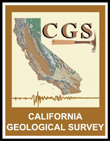
|
California Division of Mines
Speial Report 53 Igneous and Metamorphic Rocks of Parts of Sequoia and Kings Canyon National Parks, California |
INTRODUCTION
IGNEOUS AND METAMORPHIC ROCKS OF PARTS OF SEQUOIA AND KINGS CANYON NATIONAL PARKS, CALIFORNIA
Donald C. Ross*
*Paper adapted from a thesis submitted in partial satisfaction of the requirements for the degree Doctor of Philosophy in Geology, University of California, Los Angeles. Manuscript submitted for publication November 1953.
Recent work has revealed the complexity of many supposed homogeneous batholithic bodies in the Sierra Nevada. The present study of thirteen plutonic rock units mapped in 150 square miles of Tulare County is further proof of the intrusive diversity of at least a part of the Sierra Nevada batholith.
Geography and Features of Sequoia National Park. The area described in this report is in the western part of Sequoia National Park and adjacent parts of the Kings Canyon National Park and Sequoia National Forest. The Ash Mountain entrance to Sequoia National Park, in the southwest corner of the area, is 27 miles northeast of Visalia, California.
California State Highway 198 connects Visalia with the Park, and a well maintained asphalt road (Generals Highway) crosses the west end of the Park and connects with California Highway 180 near the northwest corner of the area. Branch roads of poorer quality extend to Crystal Cave, Big Meadow, and Redwood Canyon. The many Park Service and Forest Service trails aid travel in the higher country and provide the only access to the lower, brush-covered slopes.

|
| PHOTO 1. Moro Rock. A large dome in the Giant Forest pluton as seen from the south on the Middle Fork trail. |
Sequoia National Park is the second oldest National Park in the country; its main attraction is the giant redwood tree Sequoia gigantea. Sequoia gigantea is restricted to isolated, scattered groves on the intermediate slopes of the western Sierra Nevada. Sequoia National Park contains a number of these groves, the largest of which is Giant Forest with well over 3,000 trees, many approaching 300 feet in height and 30 feet in diameter. The other major groves are Muir Grove, Lost Grove, and Redwood Mountain, as well as others outside the area of this report.
An interesting book (Matthes, 1950) has been published on the geology of Sequoia National Park based on the work of François E. Matthes, who spent much of his life in the Sierra Nevada. The many photographs in the book, with only a small amount of printed text, make it particularly interesting to persons who have not had geologic training. Matthes specialized in the study of glacial action, and his book is concerned chiefly with the work of glaciers and other erosional and weathering processes that produced the present landforms of the Sequoia area. Most visitors to Sequoia will not have an opportunity to visit the High Sierra country where Matthes did most of his work, but some of the photos in the book are from easily accessible points within the area of this report, and the area around Heather Lake and Pear Lake shows ample evidence of the work of glaciers. These lakes are in glacial cirques, and rock surfaces that have been polished and striated by glaciers can be seen at both lakes.

|
| PHOTO 2. Exfoliation in the Giant Forest pluton as seen from the Generals Highway south of Dorst camp. |
Several caverns occur in the marble in Sequoia National Park. Crystal Cave is the best known, and tours are conducted through it by the Park Service. Though Crystal Cave is small, it presents nearly all the features of larger caverns and is a worthwhile part of a visit to Sequoia. An informative booklet (Oberhansley, 1946) describes the cave and the formation of caverns.
Large, massive, resistant domes of plutonic rock are found throughout the Sierra Nevada. Moro Rock is such a dome. Its crest is easily reached by means of a stone stairway, where one may view the spectacular Kaweah River basin, and the high peaks of Kaweah ridge. Other similar, but somewhat less impressive domes are Little Baldy, Big Baldy Ridge, Beetle Rock, and Sunset Rock (the latter two in the Giant Forest area). All are easily accessible by trails. These domes are characteristically eroded into thick shells, to give the appearance of the layers of an onion partially peeled. The formation of these shells is not fully understood, but the process and possible causes are discussed by Matthes (1933) in his very interesting account of the history of Yosemite Valley. Smaller "pilot models" of this process, known as exfoliation, can be seen in roadcuts along the Generals Highway.
The country around the small lakes in the northeastern part of the area can be reached by trails from Giant Forest and the Generals Highway and provides excellent country for short camping trips. Jennie Lake, Twin Lakes, Pear Lake, and others are only a half-day trip from roads for a somewhat experienced hiker, and provide an opportunity for a kind of relaxation that is not possible around the more populous Giant Forest area. Almost all the trails north and east of the Generals Highway above Giant Forest provide excellent hiking.
Giant Forest Village, the largest populated area in the park, contains most of the facilities of a small town. Many cabins and public campgrounds are located near the Village. Ash Mountain Park Headquarters is the permanent main headquarters for Sequoia National Park.
Acknowledgments. The writer wishes to acknowledge the aid of Professor K. DeP. Watson, of the staff of the University of California at Los Angeles, who provided innumerable helpful suggestions in the writing of the thesis that provided the basis for this report. The photomicrographs were taken by A. C. Daley. The 272 excellent thin sections used in the petrographic study for this report were made by John De Grosse.
| <<< Previous | <<< Contents >>> | Next >>> |
ca/cdm-sr-53/intro.htm
Last Updated: 18-Jan-2007